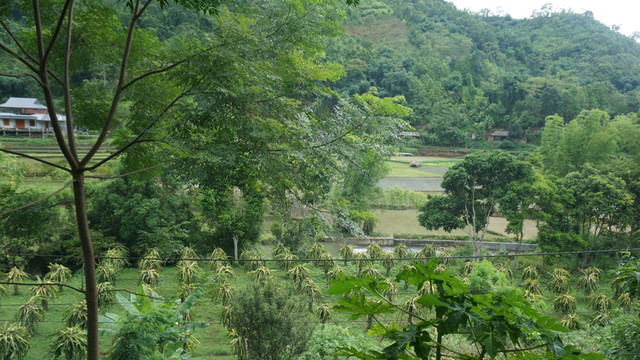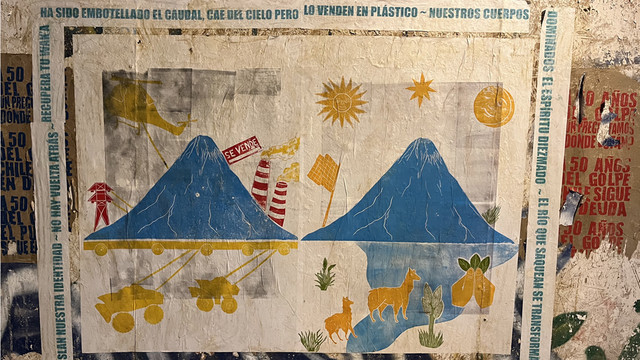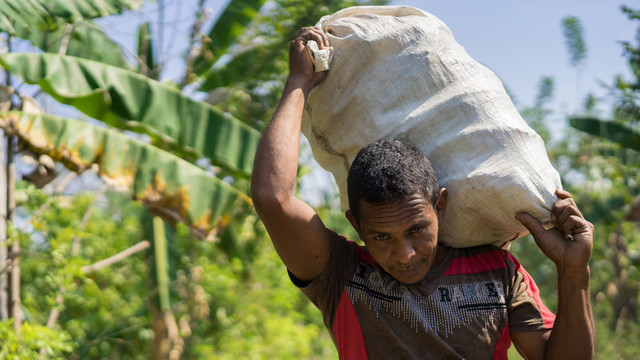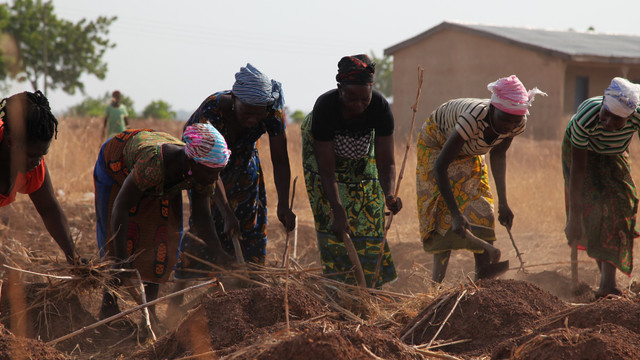Forest businesses 'fit for life'
Those designing forests businesses that are ‘fit for life’ won’t be taking any inspiration from Doha airport, says one weary blogger.


Mountains, forests and rice paddies in Nepal. Photo: Sajal Sthapit
Doha airport at 3am is one of my least favourite places — a soulless, crowded tomb, unfit for purpose where corporate design is at its least humane.
Flights arrive near midnight, spewing sleep-deprived passengers into a directionless white oven of jewellery, perfume and Starbucks outlets. No shops sell travel essentials or even healthy food. A dismal central crèche distributes screams from critically-bored children as far as possible and an endless clang of announcements wakes you to say ‘Doha is a silent airport – please consult the signs for flight information’.
Those signs flip the hundreds of departures from Arabic to English in just the time it takes to find a flight number. Travellers wait, butt-tired from seats with no headrests (just hard plastic dividers to ensure no-one lies down). And when you do finally board, none of the gates have a walkway to the airplanes — those seem to land somewhere else entirely.
Forest connection
Sitting there, however, did give time to reflect on the third Forest Connect meeting, held in Nepal (12-15 February 2013). Nepal is a world leader in community forestry, with roughly 18,000 groups established across 1.8 million hectares and involving 40% of the country’s population. Turning this impressive feat of community organisation into profitable and sustainable businesses is the current challenge.
To share learning on where to spend scarce resources, 18 country teams that support small forest enterprises gathered in Kathmandu. The new Forest and Farm Facility and several other new institutional players also joined the Forest Connect alliance during the meeting.
We kicked off with reports from Brazil, Burkina Faso, Cambodia, Democratic Republic of Congo, Ethiopia, Mexico, Tanzania and Vietnam as well as Nepal. Each had screened multiple small forest enterprise sub-sectors for market prospects and the numerous outcomes the world needs to see from its business models: income generation, gender equity, food security, energy security, climate change mitigation and adaptation, biodiversity conservation and soil conservation without excessive nitrification.
The task was to devise what the Doha Airport designers had so manifestly failed to produce: a business model ‘fit for life’.
To survive on Earth we will clearly need to negotiate fairer greener business priorities and models that meet some basic pre-conditions for involving the poor (for whom survival is a pressing current problem, not a future climate-related one).
Priorities
Inevitably, countries’ environmental, social and market contexts led them to different business priorities. Nevertheless, Forest Connect partners united in prioritising portfolios of integrated, intensified and climate-smart forest and farm products – mixing short term agricultural cash crops, often in agroforestry systems, with longer term options such as timber.
For example, the Nepal team from the Asia Network for Sustainable Agriculture and Bioresources (ANSAB) ranked ecosystem-based agricultural cash crops first, alongside biomass energy briquette production. But they also planned a range of other products from highland coffee, tea, ginger, fruit and medicinal plants to longer term timber options.
The Tanzanian team stressed the need for mixing higher return options, such as timber / fuel wood production from woodlots, with lower return options offering much higher social and environmental gains — such as fertilizer trees and indigenous fruit trees.
A mix of short and long term suits farmers’ cash flow needs. Mixing high return cash crops and lower return social or environmental options suits their broader environmental and social needs. And a diverse portfolio suits farmers' cautious attitude to risk (which climate change reinforces).
Business models
A two day field trip showcased profitable and well-organised community business models, ranging from FSC certified hand-made Lotka Paper and essential oils to packaged charcoal briquettes made from waste-wood (both with community owned market outlets in Kathmandu). All had impressive models of shareholding ownership, structured value chains under local community control, and transparent labour and wage structures. Each was pursuing several income-generating business options simultaneously.
It was agreed that country teams would do more to share their knowledge of business models that work in such complicated situations: where collective decision-making, multiple market links across a product portfolio, and benefit-sharing combine.
Preconditions
Our final day’s discussion reaffirmed the four preconditions for successful business models. Peter deMarsh, of the International Family Forest Alliance, summarised these beautifully as questions that forest farmers ask of any new crop:
- “If I plant this, will I have the right to sell it? (Precondition 1 – secure tenure);
- “If I plant this, will I be able to sell it for a reasonable price? (Precondition 2 – fair market acess);
- “If I plant this will I be able to manage it and protect it against pests and diseases?” (Precondition 3 – technical and extension support); and finally
- “If I plant this, will any association that I am able to join be able to defend the three prior preconditions?” (Precondition 4 – freedom of association).
Sharing these preconditions, models and approaches may yet help to develop spaces in which both the human soul and the environment flourish – just don’t look to Doha airport for the answers.



